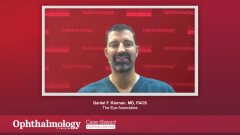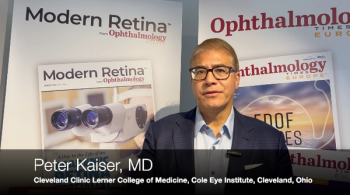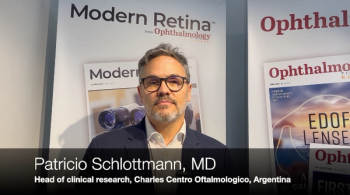
Impressions and Takeaway Points From Case #2
Daniel F Kiernan, MD, FACS, discusses idiosyncratic biologic response to anti-VEGF treatment in a patient with neovascular AMD.
Daniel F. Kiernan, MD, FACS: I’d never seen an idiosyncratic reaction to faricimab like this. In my experience, faricimab tends to dry up persistent fluid a bit better than Eylea. Those are the majority of cases when I use faricimab. In this case, I was initially worried about postoperative inflammation and macular edema being factors, so I tried restarting their topical drops and other agents geared toward drying up the macula. I didn’t see much of an effect. In fact, it appeared to be worse, which convinced me that there was a choroidal neovascular component present, so we proceeded with the anti-VEGF biologic injection.
Unfortunately, the patient still had an inflammatory component. That idiosyncratic-appearing reaction to that faricimab might have been a fluke because of the inflammation. Persisting with the faricimab may have helped the fluid resolve. More likely, adding a steroidal anti-inflammatory, as mentioned by many of our participants, might have been a reasonable option: sub-Tenon Kenalog, an intravitreal dexamethasone implant, or an intravitreal fluocinolone acetonide 0.18 mg implant to treat posterior uveitis. Any of those options would be good in addition to continuing with our anti-VEGF injections to treat the wet AMD [age-related macular degeneration].
Those are the key takeaways. Sometimes you can have overlapping components, including an inflammatory component, on top of the wet AMD because of prior ocular surgery.
Thank you for watching this Ophthalmology Times® presentation. We hope you found this presentation informative and applicable in your practice.
Transcript edited for clarity
Newsletter
Don’t miss out—get Ophthalmology Times updates on the latest clinical advancements and expert interviews, straight to your inbox.






















































.png)


